from 0 review
20 Overnights 21 days
Specific Tour
10 people
___
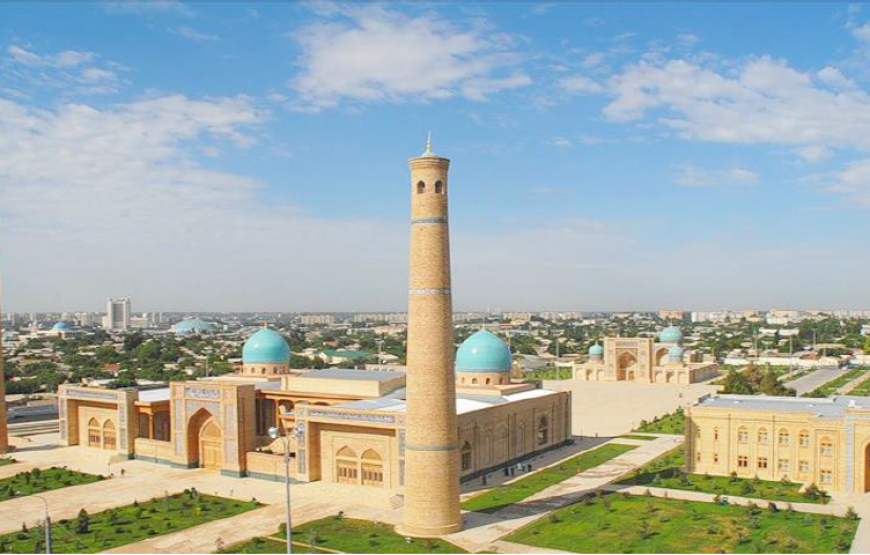
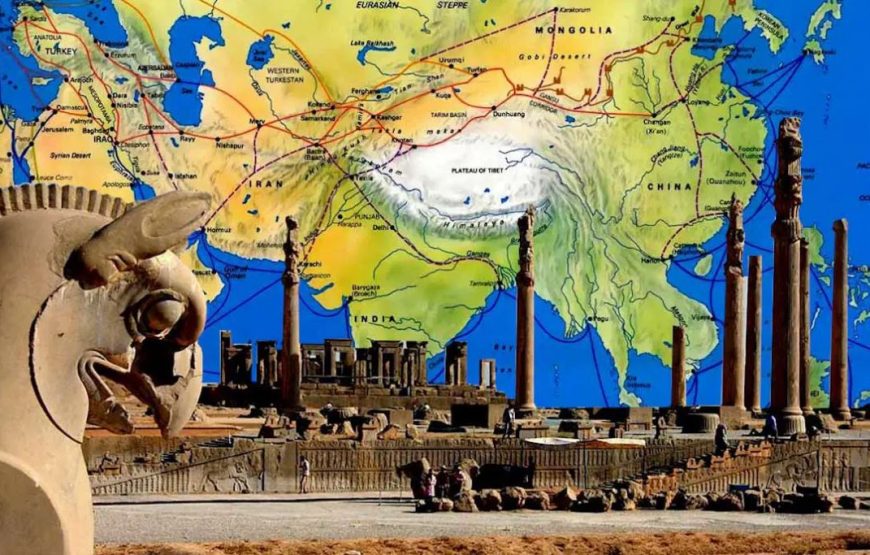
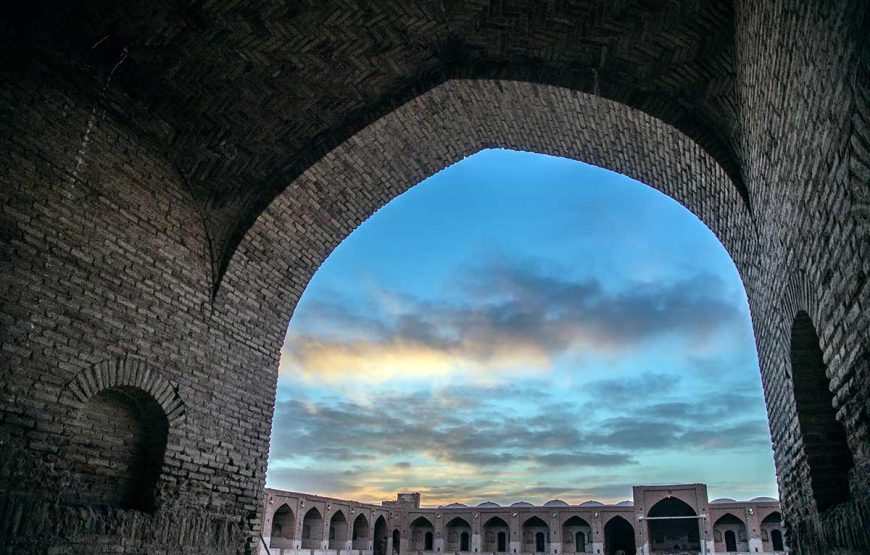
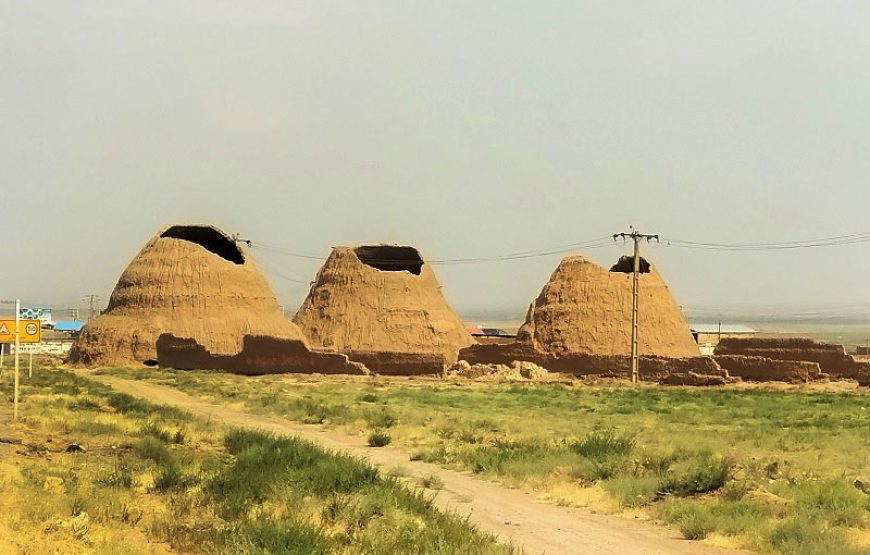
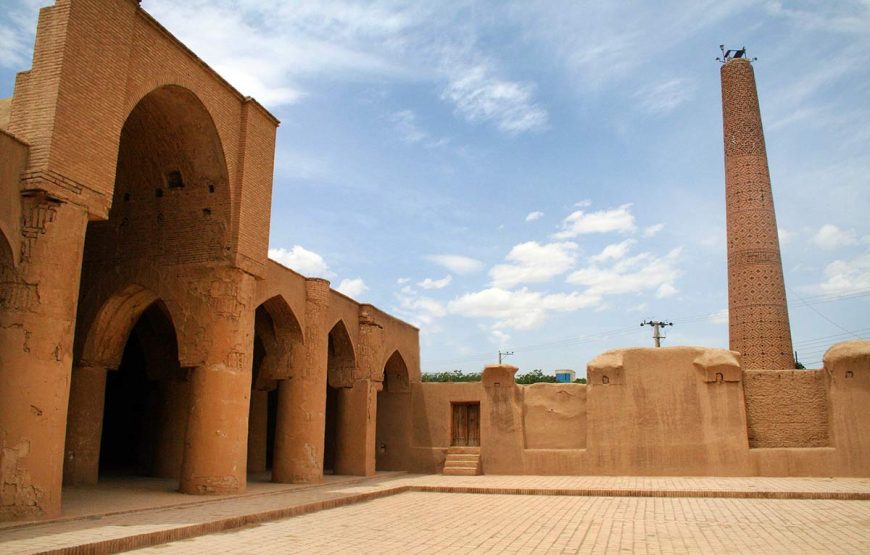

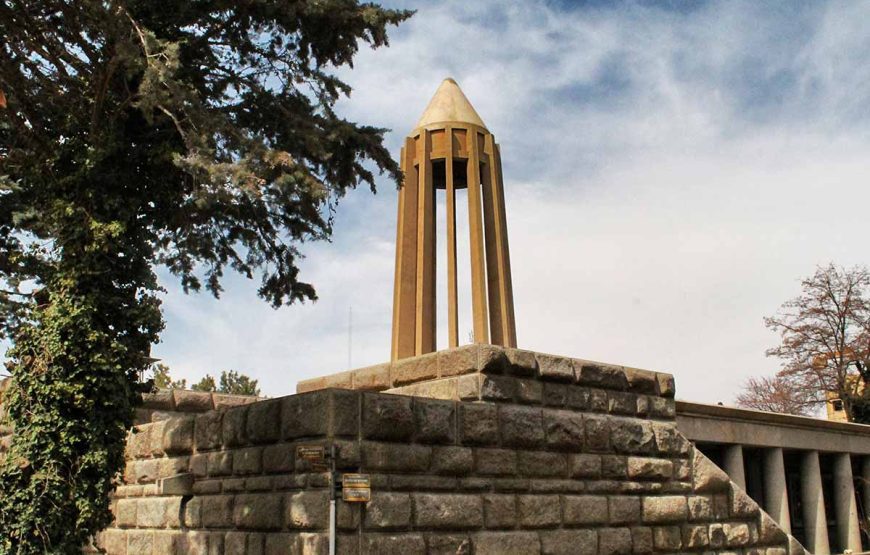

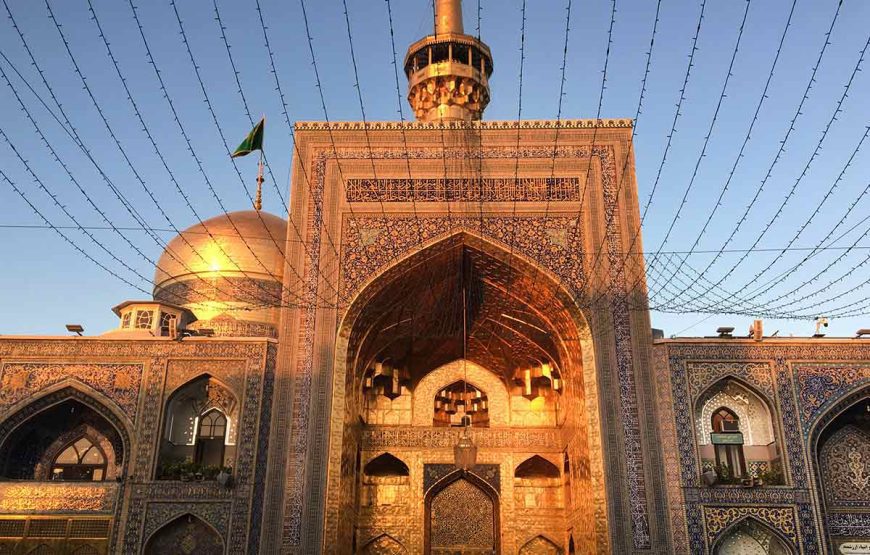

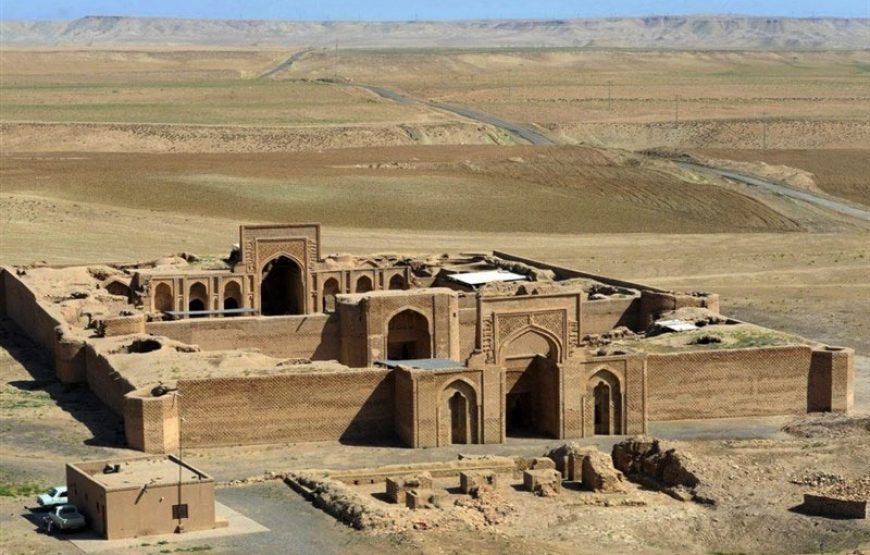

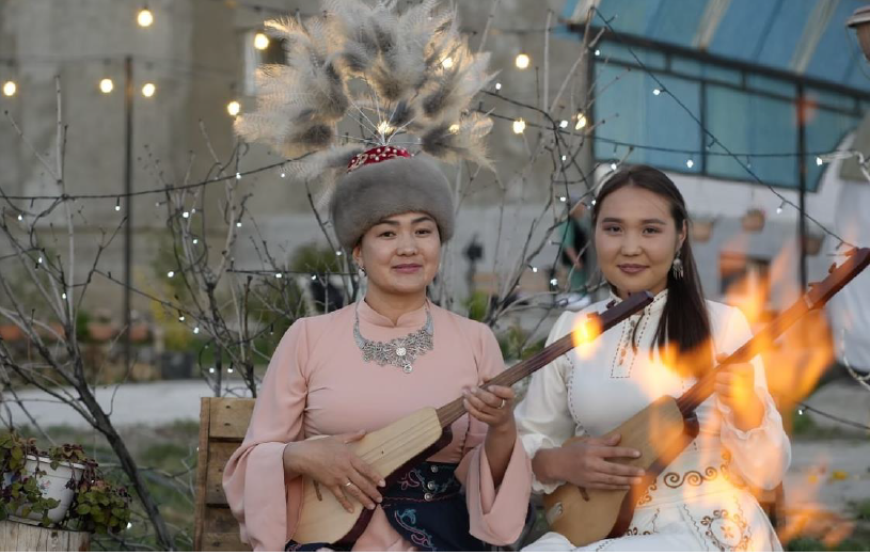
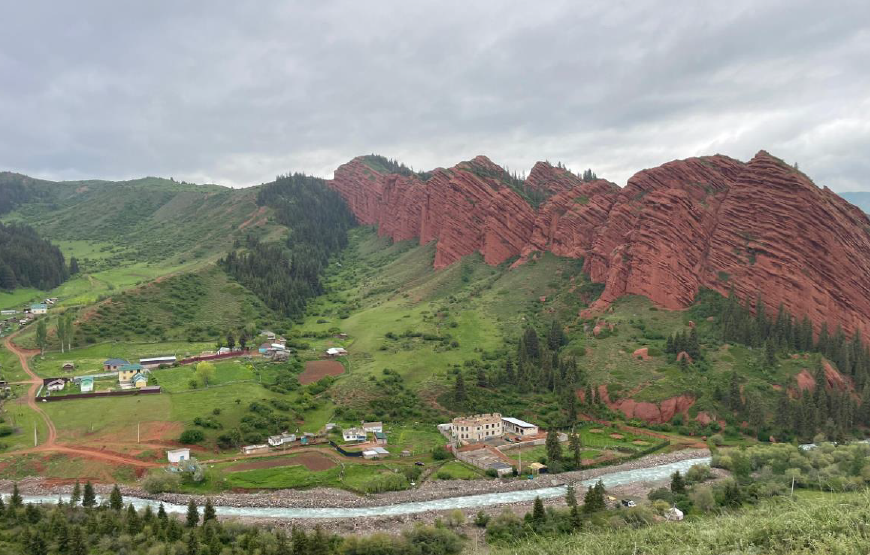
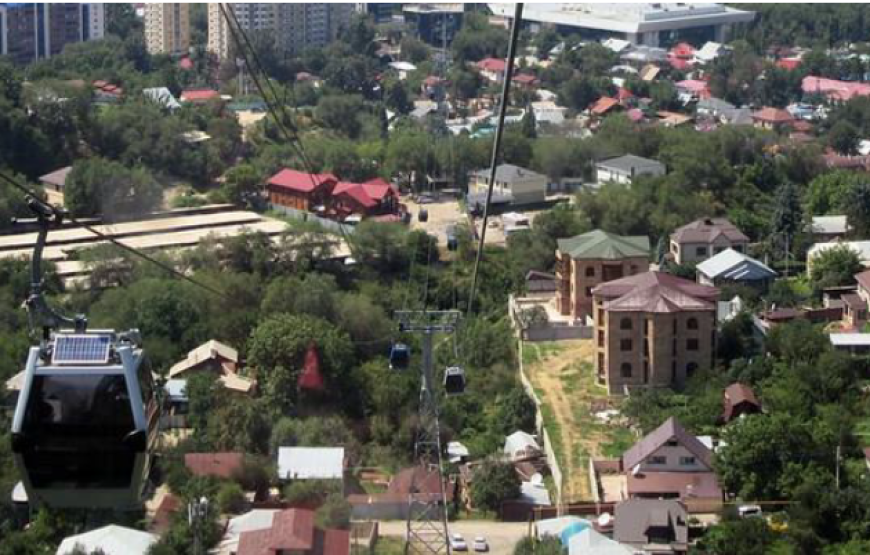
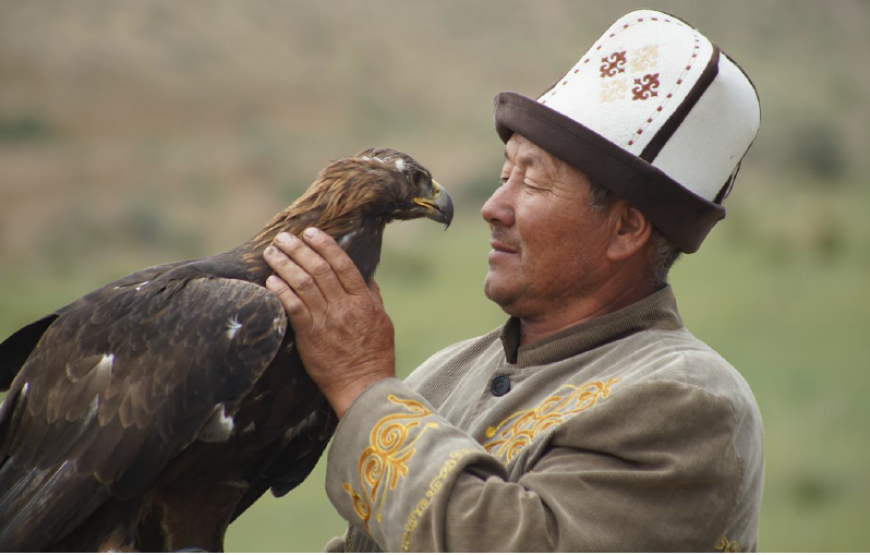
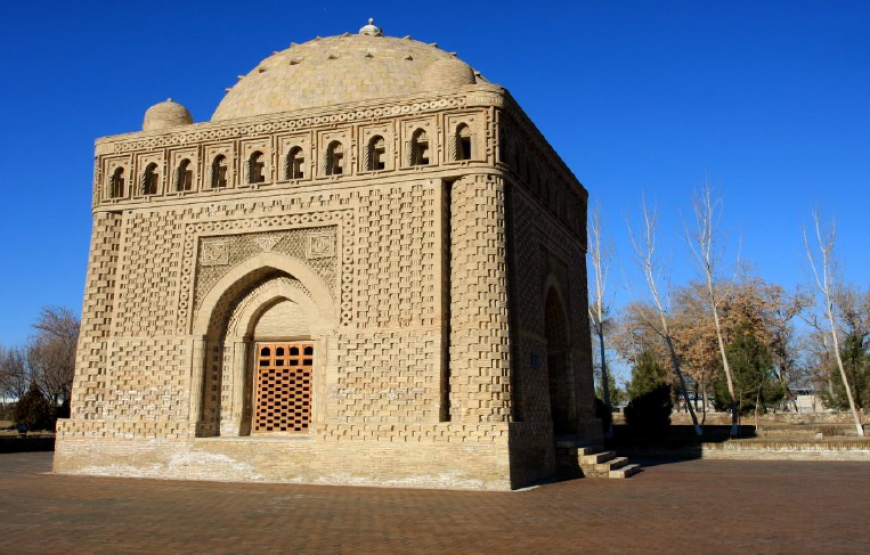
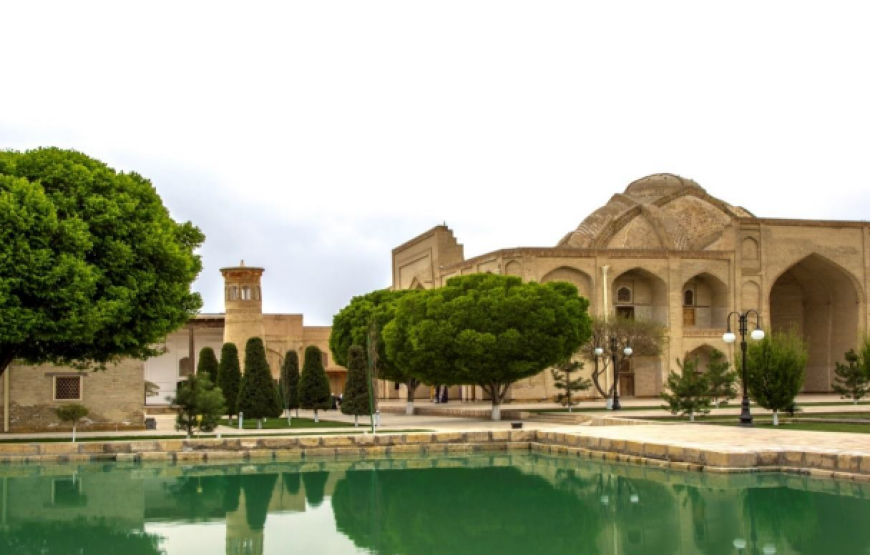
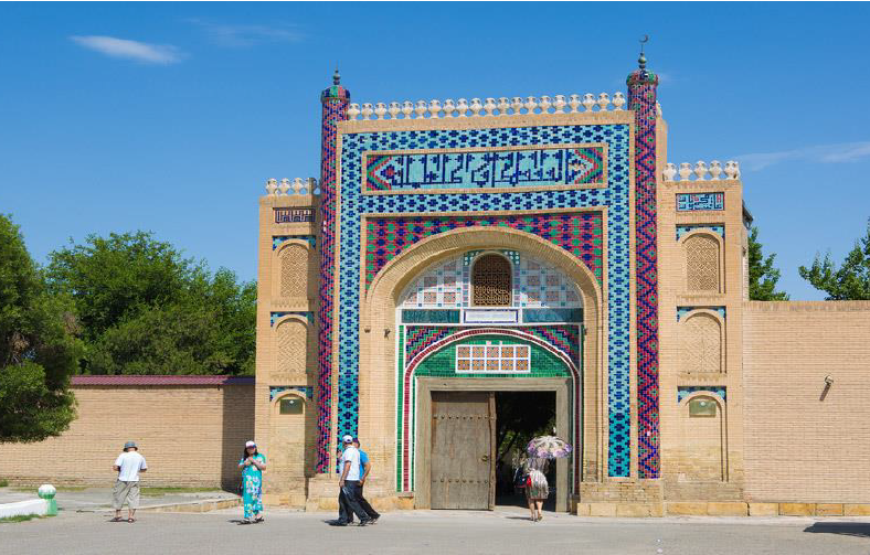
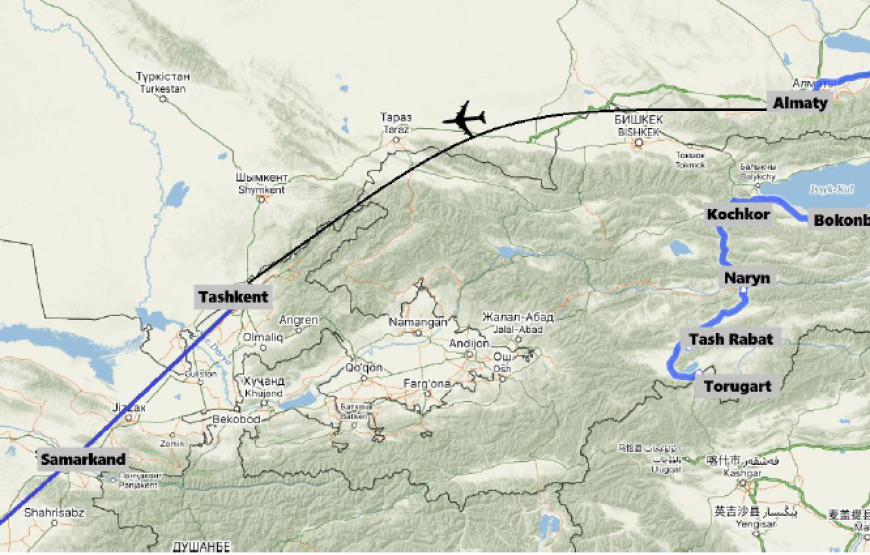
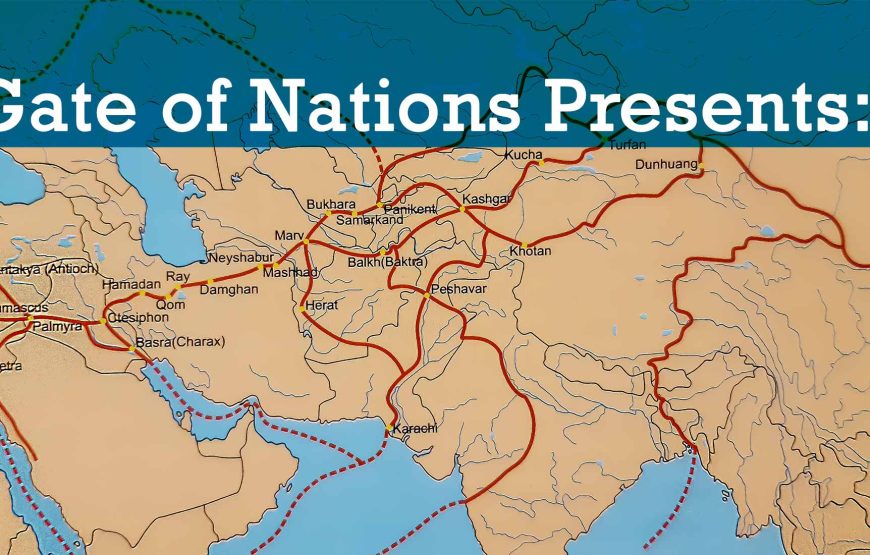
Embarking on a journey through the heart of the Silk Road is like stepping into a living museum of ancient trade routes, rich cultures, and breathtaking landscapes. Our carefully curated Central Asia tour take you deep into the heart of this fascinating region, connecting you with the timeless wonders of Uzbekistan, Kazakhstan, Kyrgyzstan, and Iran. Designed for history lovers, culture seekers, and adventurers alike, these routes follow in the footsteps of ancient merchants and explorers. Join one of our best Silk Road tours and experience a captivating blend of past and present, where bustling bazaars, majestic mosques, and mountain vistas await.
The Route is: ✈ Uzbekistan✈ Kazakhstan✈ Kyrgyzstan✈ Iran✈
| Season | whole year |
| DEPARTURE/RETURN LOCATION | Iran |
| Style | Cultural |
| Hotel Rate | 3-4 star |
| Vehicle | Depends on the size of the group |
The journey begins in the vibrant cities of Uzbekistan—Tashkent, Samarkand, and Bukhara—where Persian architecture, turquoise domes, and ancient madrasahs transport you back to the golden age of the Silk Road. These best Silk Road tours include local experiences like traditional craft demonstrations, folk music performances, and regional cuisine tastings. Each city along the route reveals a new layer of cultural heritage, shaped by centuries of migration, conquest, and trade. You’ll walk cobbled streets once crossed by traders from China to Europe, immersing yourself in stories etched into caravanserais and palaces.
Beyond the cities, our Central Asia tour venture into awe-inspiring natural landscapes—towering mountains, vast deserts, and alpine lakes. In Kyrgyzstan, you’ll meet nomadic families and stay in traditional yurts by the shores of Issyk-Kul. In Kazakhstan, explore the futuristic city of Nur-Sultan and the wild beauty of Charyn Canyon. The Iranian leg of the journey takes you to the ancient city of Tehran, followed by the historic centers of Hamedan, Kermanshah, and Mashhad, where you’ll experience centuries of Persian culture, art, and architecture. Our itineraries are designed to balance adventure with cultural depth, ensuring a memorable and enriching travel experience. Whether you’re drawn by history, nature, or cross-cultural encounters, these journeys promise authentic discovery and unforgettable memories across Central Asia and Iran’s legendary Silk Road.
Ready to experience the magic of the Silk Road? Contact us today to start planning your unforgettable adventure with our Central Asia tour!
| # | Discount group | From (Person) | To adult | Value |
|---|---|---|---|---|
| 1 | 1 person | 1 | 1 | €0 |
| 2 | 2 persons | 2 | 2 | €800 |
| 3 | 3 persons | 3 | 3 | €4692 |
| 4 | 4 persons | 4 | 4 | €9520 |
| 5 | 5 persons | 5 | 5 | €14055 |
| 6 | 6 persons | 6 | 6 | €18384 |
| 7 | 7 persons | 7 | 7 | €23023 |
Day 1. Airport - Tashkent (ca. 10 km, 20 min) (Uzbekistan)
Upon arrival at Tashkent International Airport you will be met by our team and taken to the center. Standard check in at the hotel after 14:00pm.
Today we start our sightseeing tour at the capital city of Uzbekistan. We visit Hazrati Imom Complex Spiritual heart of Tashkent (16-20centuary), Chorsu bazaar one of the busiest bazaars in Tashkent.
Lunch at local restaurant, where you try Uzbek cousin.
Then we visit Amir Temurs square statue of Amir Temur was placed on site in 1994, Independent square, Tashkent Metro, and Applied Art Museum.
Dinner at the restaurant and overnight at the hotel.
Meals included: lunch, dinner
Day 2. Tashkent – Bukhara (domestic train)
Breakfast at the hotel. Transfer to train station at 07:00.
Take a train to Bukhara at 07:54, arrive will be at 12:11.
Lunch at local restaurant.
Start sightseeing at the city of Islam and Culture: Samanid mausoleum is one of the oldest buildings (10th century), Chashmai Ayyub mausoleum also known as a Museum of water, Bolo Hauz mosque built in 1712 looks elegant and splendid, Ark Fortress and Poi Kalyan complex. Then we visit Ulugbek Madrasa one of the first madrasa built in 1417, Abdullazizkhan Madrasa is a medieval madrasah built in 1651, Tim Abdullah Khan, Magok-I Attari Mosque and Lyabi- Hauz complex.
Dinner at the restaurant. Overnight at the hotel.
Meals included: breakfast, lunch, dinner
Day 3. Bukhara – Samarkand (domestic train)
Breakfast at the hotel.
We visit Chor Minor Mosque which has an unusual but unique look, Naqshbandi Complex - most religious place and always crowded. After lunch, we explore Sitora-i-Mokhi-Khosa, Chor-Bakr Complex ancient cemetery equal to 3
hectares.Transfer to train station at 15:30 to take a train at 16:24. Arrive to Samarkand at 18:10 and transfer to hotel.
Meals included: breakfast, lunch, dinner
Day 4. Samarkand
Breakfast at the hotel.
Today we start the sightseeing at kingdom of Timurids dynasty, we head to Guri Amir Mausoleum of Timurids Dynasty and Registan square which has three madrasas all built in different time.
Lunch at the restaurant.
Next we visit Bibi Khanum Mosque built in 1399 by Amir Temur, Siab Bazaar oldest and still operating bazaar and Shahi Zinda Complex - nobel street cemetery XI to XX century.
Dinner at the restaurant and overnight at the hotel.
Meals included: breakfast, lunch, dinner
Day 5. Samarkand – Tashkent (domestic train)
Breakfast at the hotel.
Before departure we visit Ulugbek observatory built in 1425-1429, Mausoleum of Hodja Daniyar and Afrasiab museum – oldest in Samarkand.
After lunch, we visit Konigil ancient paper factory to take part at master-class.
Transfer to train station at 16:30. Take a train at 17:30 to Tashkent.
Arrive to Tashkent at 20:10 and transfer to hotel.
Meals included: breakfast, lunch, dinner
Day 6. Tashkent - Airport – Bishkek (flight) (ca. 25 km, 40 min) (Kyrgyzstan)
Breakfast at the hotel. Free time before 11:30.
After lunch, you will be taken to the airport to take a flight to Bishkek HY 777 (15:20 – 17:30) *
Upon arrival at Manas International Airport, you will be met by our team and taken to the city.
Dinner in the traditional restaurant where you can taste the national Kyrgyz cuisine.
Meals included: breakfast, lunch, dinner
Accommodation: Hotel 4* (Ramada Hotel)
Day 7. Bishkek
Breakfast at the hotel. Today we will start a city tour of Bishkek.
We will visit the heart of the city, Ala-Too Square where the State Historical Museum is located.
After we can enjoy a walk in the Oak Park, one of the favorite places of local people.
After lunch at the local restaurant, we visit the famous market, Osh bazar (closed on Mondays). Just as you step into the market, you plunge into the real oriental atmosphere: an interminable stream of people, a big variety of goods and colors.
Dinner in the traditional restaurant.
Meals included: breakfast, lunch, dinner
Day 8. Bishkek – Burana – Bokonbaevo (ca. 290 km, 5-6h)
After breakfast at the hotel, we go towards Burana Tower.
Burana Tower is an ancient minaret in the Chuy Valley in the north part of Kyrgyzstan. It is close to the city of Tokmok. The tower with funerary monuments, earthworks, remains of the castle and three mausoleums – that’s all what last out of the ancient Balasagyn town that was founded by Karakhanids at the end of the ninth century.
Lunch in the Iskra village with in Dungan guesthouse, the ethnicity of Chinese Muslims who had to flee China. We taste their national cuisine.
After lunch, we will continue our journey to the village of Bokonbaevo, located on the southern shore of Issyk-Kul Lake. This place should be visited by every eco lover. Here, we will witness an eagle show, a demonstration of the ancient tradition of hunting with golden eagles, a practice that has been passed down for centuries. We will stay in traditional Kyrgyz yurts - essential part of nomadic culture.
Before dinner, you will have time to take a walk along the shore and relax.
Dinner at the yurt camp.Meals included: breakfast, lunch, dinner
Day 9. Bokonbaevo – Skazka – Barskoon - Jeti Oguz – Karakol (180 km, 4h)
Breakfast at the yurt camp.
Today we visit other beauties of the south coast, that are located not far from each other.
The first location is Skazka canyons (which signify Fairytale) you can find objects of surprising shapes and sizes. A real skyscraper or an animal may appear in front of you. Next destination – Barskoon gorge, famous for its waterfalls. One of the most well-known is the Manas' Bowl waterfall. Later we arrive in picturesque mountain gorge Jety Oguz. Its name means “seven bulls”. The name is symbolic, because there are seven huge red-brown rocks resembling ranked furious bulls standing together. We will hike up to a panoramic viewpoint to take a photograph against the backdrop of the red cliffs. In the evening we arrive in Karakol town, which is considered the main settlement of the Issyk Kul region.
Dinner at the restaurant.
Meals included: breakfast, lunch, dinner
Day 10. Karakol
Breakfast at the hotel. Today, we will have a leisurely day, getting to know the city's history and diving deeper into Kyrgyz culture. We begin our tour of Karakol, visiting its main attractions such as the Russian Orthodox
Cathedral, built in 1895, the Dungan Mosque, constructed in 1910 with unique nail-free wooden architecture.
Before lunch, we will have time for a leisurely walk around the city, to photograph old Russian houses.
Lunch at the guesthouse. To experience Kyrgyz traditions, we assemble a traditional small yurt—setting up its wooden frame and covering it with felt, just as nomads have done for centuries. After that we enjoy a folk performance by Kyrgyz musicians. Next we head towards Przhevalsky Museum, dedicated to the famous Russian explorer Nikolai Przhevalsky. He played a significant role in mapping Central Asia and conducting research in the
region.
Before dinner, we will take a 1h boat trip to enjoy the beauty of Issyk-Kul Lake and the majesty
of the snow-capped mountains of the Tien Shan.
Meals included: breakfast, lunch, dinner
Day 11. Karakol – Karkyra border – Kolsay National Park (240 km, 5h)
Breakfast at the hotel.
Today we will head to neighboring Kazakhstan. This country is located in the center of Eurasia and is considered the ninth country in the world in terms of area.
Lunch at the hotel upon arrival in national park.
Here, in the northern Tien Shan, located a system of three lakes called Kolsay. Today we will have an opportunity to visit the lower Kolsay lake, which is located at an altitude of 1800 meters and surrounded by coniferous forest from the Tien Shan spruce. The depth of this lake is 80 meters and the water does not warm up above 10 degrees even in
hot weather.
Dinner at the hotel.
Meals included: breakfast, lunch, dinner
Day 12. Kolsay National Park – Charyn Canyon – Almaty (350 km, 5-6h)
After breakfast in the hotel we head to Charyn canyons that is often called “Valleys of Castles”. The length of the valley is more than 2 km, the width is 20-80 meters. Here we can find more than 1,500 species of plants, 17 of which are listed in the Red Book of Kazakhstan, and also 103 species of nesting birds and 25 species of reptiles.
Lunch at the café.
Then we will head to Almaty, which is considered not only the largest city of the country, but also the cultural, historical and financial center.
Dinner at local restaurant, where you try Kazakh cousin.
Meals included: breakfast, lunch, dinner
Day 13. Almaty – Medeo – Kok Tobe - Almaty (ca. 70 km, 1h one way)
After breakfast, we start our city tour of Almaty.
First we explore bustling market “Green Bazaar” filled with local produce, meats, spices, and traditional Kazakh delicacies (closed on Mondays). We will take a walk through Panfilov Park, visit the Museum of Musical Instruments, and explore one of the city's most beautiful and impressive architectural landmarks - the Zenkov Cathedral. Next, we go the Medeo gorge where the highest mountain sports complex at an altitude of 1691 meters is located. Medeo is often a favorite place for the residents of Almaty on weekends. Last destination is Kok Tobe hill, famous for its panoramic view of the city from all directions. To reach the Kok Tobe hill, we take a cable car ride which starts near Hotel Kazakhstan and goes over some of the oldest parts of Almaty and the magnificent fruit-growing gardens. Once you reach the Kok Tobe hill, you would see the famous 372 meters high TV Tower which is visible from far and offers great views of the mountains and the city plus a few attractions at the top.
Dinner at the restaurant.
Meals included: breakfast, lunch, dinner
Day 14. Almaty – Airport – Departure (ca. 25 km, 50 min)
Departure to the airport and flight to Mashhad, Iran
Day 15 .Mashhad
Day 16. Sabzevar
Leaving Mashhad to follow the Silk road to the west and the first station is Qadamgah. Qadamgah has been the last house before Neyshabur on the Silk road and included Caravansary, Stable and a bathhouse for travelers. The fame of Qadamgah is foe being a pilgrimage site for Muslims as a place that Imam-Reza stopped and stayed for a while (Qadamgah in Farsi means footprint and there is a creed about a stone there with Imam-Reza’s footprint on it) and it has a monument with four-porched plan and a high dome on it and tiling decorations in order of Shah-Abbas Safavid in 17th century.
In Neyshabur we visit the archaeology museum inside a 17th century Caravansary in the middle of the town and Attar-Neyshaburi mausoleum. Attar was a great and famous poet, Sufi and theoretician, who had an immense and lasting influence on Persian poetry and Sufism. Then we leave Neyshabur to follow the road to Sabzevar. 10km before Sabzevar, we stop to visit Khosrogerd Minaret, a high tower from 12th century and a good example of Seljuq architecture and it’s all remained from a Silk road town of Khosrogerd, which destroyed during Mongols invasion in 13th century.
In Sabzevar we visit the old Mosalla (in Farsi means a place to pray and usually use for Friday mosque).The old Mosalla of Sabzevar is a brick-made structure from 14th century and Sarbedaran era. Then we have a look to the ice-houses of Sabzevar. Icehouse was a solution for providing ice in hot summers especially in desert cities. The brick and mud structure with a huge dome can maintain the internal space very cool for a long time and they put the ice pieces there from winter to use it in summer.
Day 17. Semnan
Continuing the Silk road from the east to the central part of Iran. At the middle of the way to Shahrud, we stop to visit the biggest Caravansary complex in Iran. Miyandasht complex consists of 3 Caravansaries connected together from Safavid and Qajar era. Also, the complex has 3 cisterns and a bathhouse and water provided with a Qanat (the underground canals system), which is still works and providing water.
The next stop is Bastam, a Mystic town next to Sharud to visit Bayazid-Bastami complex. Bastam is a place of prominent mystics Sufi and Darvishes in Iran’s history. Bayazid-Bastami, a great and famous Sufi was born in 9th century in a Zoroastrian and priest family. This Iranian Sufi was a master teacher of the knowledge and mysticism of his time in the pre-Islam era. By studying the history of mysticism, we understand that Bayazid was one of the first writers and poets among the most famous Iranian mystics. His complex in Bastam included of his mausoleum, Khanqah (worship place for Sufi and Darvish), a minaret and a the eastern porch.
The complex date goes back to 12th century and Seljuq era but completed in Mongols era. Kashaneh tower and Friday mosque of Bastam are also from Mongols era (Ilkhanid era). Kashaneh Tower of 14th century made of bricks, also known as Ghazaneh. Some believe it used to be a fire temple before Islam. Some believe that Ghazan Khan, the Mongol ruler has built it. Also the most interesting thing in the Friday mosque is the Mihrab (where the Imam or leader prays and shows the Mecca direction for Muslims.) This Mihrab is in Mongols style, a masterpiece of stucco by the order of Oljaito (Ilkhanid king in 14th century).
On the road to Semnan with a couple of stops around Damqan. The first one is to visit Mehmandoust tower, a brick-made in Seljuq era (11 th century) as a mausoleum with interesting brick-made decoration. Then in Damqan town, we visit Tarikhaneh mosque, the second oldest mosque in Iran after Jame-mosque of Fahraj in Yazd. Tarikhaneh (means God’s home) was a fire temple during Sassanid era and then in the Islamic era in 11th century they changed in to a mosque but with the primary plan consists of a courtyard with columned sanctuaries and a porch with a high Minaret. Columns and arches are in Sassanid style. A couple of stops after Damqan to visit Doulat-Abad fort, a monument from 17th century consists of adobe made houses, governor house, wind towers and the fortress and the last place before arriving to Semnan is Ahowan Caravansary.
Ahowan consists of two Caravansaries next to each other. The older one from 12th century made of stone is one of the oldest Caravansary in “Iran and the second one brick-made is from 17th century.
Day 18. Tehran
Before leaving Semnan, we visit is Arg gate. This gate is the lonely monument left from the governmental citadel in 19th century. The gate is attractive with colorful mosaics and painted tiles. Before Tehran, we have a drive to Kavir national park to visit one of the oldest Caravansary of Iran, which is called as the mother of Caravansaries in Iran.
Dayr-e Gachin Caravansary is a heritage from Sassanid era (3rd to 7th century) and renovated in Safavid era (17th century). Dayr-e Gachin is one of the largest caravansaries in Persia, and, apart from the usual accommodations, includes some uncommon features. Inside the enclosure each corner was built on a different plan for a specific function. In the northwest corner there is a mill, in the southwest a small courtyard with a bathhouse and kitchen. The northeast corner was built as a private apartment around a small courtyard and must have been intended for the use of royalty or high-ranking officials.
A mosque was constructed in the southeast corner of the enclosure; it is square in plan, and in the center of the sanctuary there are four massive piers of Sasanian brick, arranged as in a Chartaqi. As with the rest of the structure, the original roof has been replaced by later Islamic vaults, but it is likely that the mosque is on the site of a Sasanian fire temple that had a domed Chartaqi in the center.
Before Tehran, the day be completed by visiting another old monument, Jame mosque of Varamin. This mosque was built in Ilkhanid era (14th century) by the order of Oljaito (the famous king of Ilkhanid) with a four-Iwan (porch) plan. The mosque has a high porch and dome made of brick with Ilkhanid-style stucco and calligraphy. For most contemporary architectural historians, Jame mosque of Varamin continues to epitomize the first crystallization of a four-iwan (porch) mosque by the Il Khanids, but also a monumentality achieved by the delicacy of ornament, the display of rich materials, and the play of light and shadow of the sculptural architectural elements.
Day 19. Tehran and Hamedan
One day to visit the downtown of Tehran. We start with the national museum, the first museum of Iran and having a walk through the old part with a look at the national garden’s gate and then Golestan palace, the royal and governmental capital in the 19th century full of tiling and glass art. After visiting the palace, our walk continues to the Grand Bazaar of Tehran to experience the Iranian culture of shopping. After lunch, the tour continues with visiting the crown-jewels museum, a very precious jewelry collection in the world. The tour continues by driving to Hamedan after the city sightseeing.
Note: The crown-jewels museum is open only from Saturday to Wednesday and at the weekend the glassware museum would be replaced on the tour.
Day 20. Hamedan
Day 21. Kermanshah
Leaving Hamedan to continue the trip to the western province Kermanshah. The first stop on the way is to visit Taj-Abad Caravansary. The special thing about this Caravansary is the plan of it. Most of Caravansaries have a quadrilateral plan and only a few of them has a circular plan like Taj-Abad. The next stop is to visit Anahita-Temple. Anahita is the goddess of water and the symbol of fertility in the ancient culture of Iran and they made some places to worship Anahita and this one is the most extensive Anahita temple in Iran from Parthian dynasty (300 BC to 200 AD).
Next stop before Kermanshah is Bisotun, a significant place on the Silk road and a UNESCO world heritage site. Bisotun shows you the different period of times in Iran. A cave from prehistorical era, a Median temple, the most important inscription from Achaemenid king Darius the great, which explains his story in Cuneiform script, the Hercules statue from Seleucid era, a bas-relief from Sassanid and a Caravansary from Safavid dynasty.
Finally in Kermanshah we Day 9 visit Taq-Bostan bas-reliefs. Taq in Farsi means arch and Bostan means garden. Taq-Bostan is a series of bas-reliefs with two carved arches next to the garden. Taq-Bostan was a popular place for Sassanid kings to have pleasure and hunting animals.
The bas-reliefs are built in 3rd and 4th century which shows Artaxerxes II coronation and two arches in Taq-e Bostan, Shapour II and Shapour III have been depicted on smaller arch and Khosrow Parviz depicted on the larger one. The bas-reliefs present the glory of Sassanid kings . Tour ends in Tehran after flying back from Kermanshah. Then you can fly back home from Tehran.
Leave a review